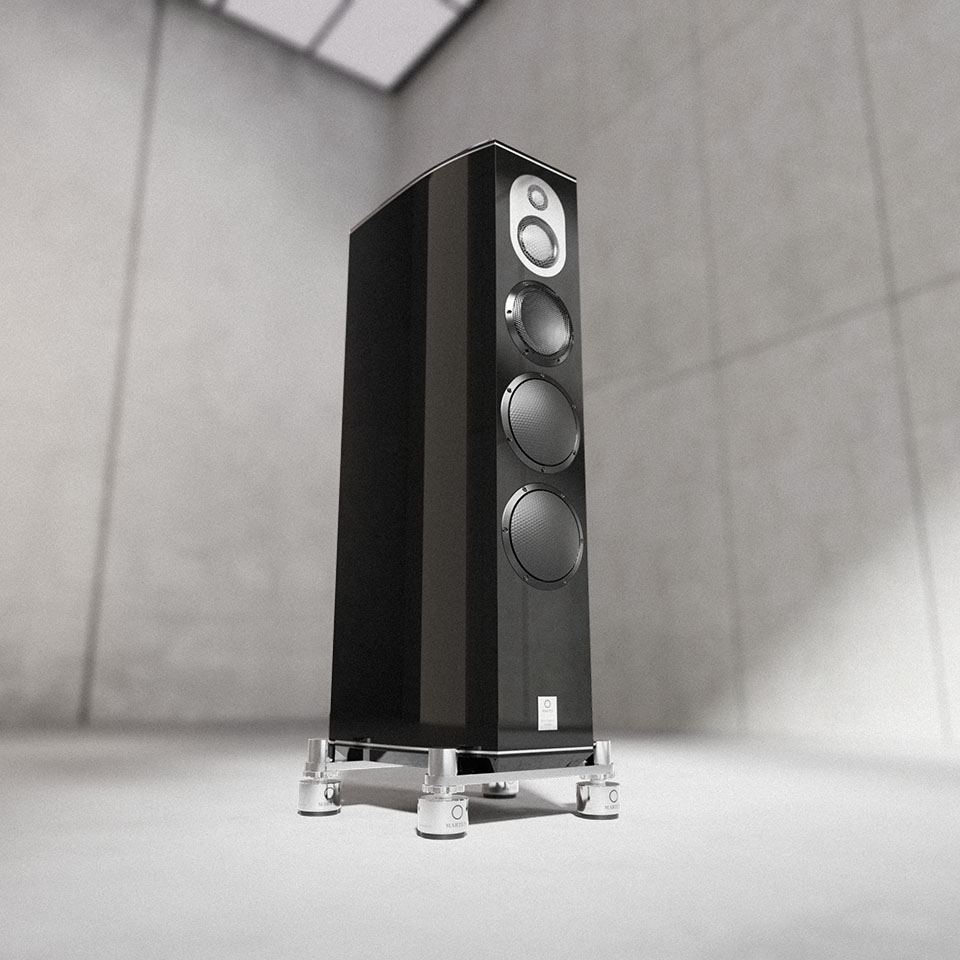When it comes to crafting our speakers we always look for materials that do the job best. Among the array of materials used in speaker construction, beryllium stood out as an exceptional choice for our recent model Mingus Septet.
This lightweight, rare element has earned its place in high-end audio systems, captivating listeners with crystal-clear sound reproduction. We’ve been curious about beryllium as a material for speaker cones for some time, and its unique properties were a perfect choice for our custom high midrange driver. Let’s find out why.
Wonder material
The lightest structural metal
Beryllium is the lightest known structural metal. With a density only a third that of aluminium, it allows for incredibly agile speaker cone movement, making it an ideal choice for high-frequency applications.Extraordinary stiffness
Despite its lightweight nature, beryllium is incredibly rigid, boasting a measure of stiffness higher than steel. This stiffness minimises unwanted resonances, ensuring precision in sound reproduction.Exceptional thermal conductivity
Beryllium boasts remarkable thermal conductivity, effectively dissipating heat generated during high-power audio playback. This property helps prevent overheating and maintains consistent performance even under demanding conditions.Corrosion resistance
Beryllium is highly resistant to corrosion, ensuring the longevity of speaker components. This makes it an attractive choice for products designed for the long-term.Wide frequency response
Beryllium’s lightweight and stiff nature, combined with its excellent damping properties, allow for a wide frequency response. It excels in reproducing subtle nuances in music, making it a favourite among audiophiles seeking unparalleled clarity and detail.

Beryllium benefits
Precision in high-frequency response
Beryllium’s stiffness and low mass enable speaker cones to respond swiftly and accurately to high-frequency signals. This results in crystal-clear treble and exceptional detail in audio playback.Reduced distortion
The exceptional stiffness of beryllium minimises distortion, allowing for cleaner and more faithful sound reproduction, especially in the midrange frequencies.Improved heat dissipation
The superior thermal conductivity of beryllium helps dissipate heat generated during high-power audio playback, reducing the risk of thermal distortion and ensuring consistent performance.Enhanced clarity and nuance
Beryllium’s wide frequency response and damping properties contribute to enhanced audio clarity and the ability to reproduce subtle audio nuances, providing listeners with a truly immersive experience.
For Mingus Septet we use a beryllium cone in the high-midrange driver— it’s the perfect material for a lightweight Moving Mass System— and as part of our continued advance in technology, beryllium takes its rightful place in shaping the Marten sound. It’s high resolution, open and transparent—ideal qualities for one of our finest models to date.












